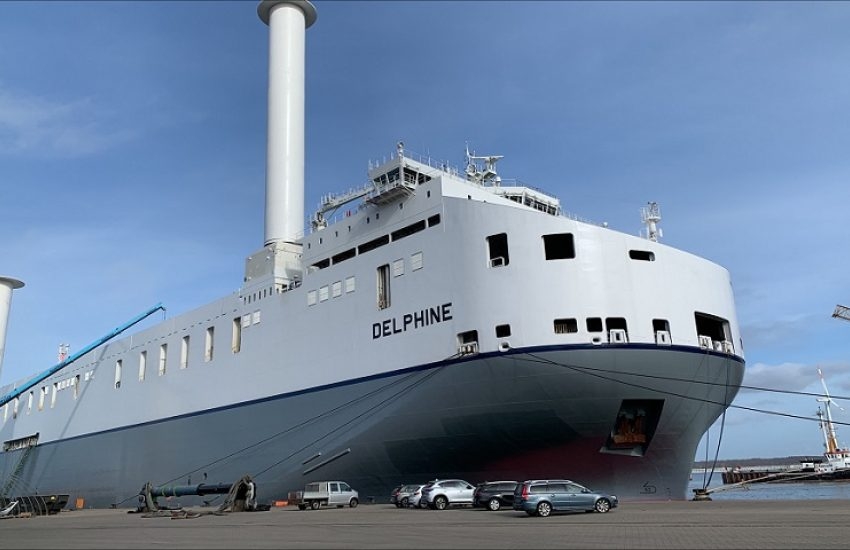CLdN has equipped the RoRo vessel Delphine with a rotor sail wind propulsion system. It is the first vessel in the CLdN fleet to be fitted with the system, which returned to service from Zeebrugge, Belgium, on 27 February.
The MV Delphine is a vessel with a cargo capacity of over 8000 lane metres and transits between the UK, Ireland and mainland Europe. It is the largest and one of the most fuel-efficient short sea roll-on/roll-off (RoRo) vessels operating in the world today with 28 grammes of CO2 emitted per tonne of cargo shipped per km travelled.
With the two 35-metre x 5-metre rotor sails deployed, the ship will emit even less greenhouse gases going forward thanks to an emission reduction saving of up to ten per cent.
Also read: VIDEO: Oceanbird gears up for testing of Wings
Flettner rotor
The rotor sails, which can be installed on new vessels or retrofitted on existing ships, incorporate a modernised version of the Flettner rotor, a spinning cylinder that uses the Magnus effect to harness wind power to add forward thrust to a ship. The solution is fully automated and detects whenever the wind is strong enough to deliver fuel and emission savings, at which point the sails start automatically. The sails are also tiltable, allowing the vessel to pass under bridges and maintaining operational flexibility.
CLdN will work with the Maritime Technology Division at Ghent University to study the performance of the sails on the MV Delphine in the coming months.
‘The rotor sails will maximise our fuel and emissions savings on the MV Delphine and we will use this project to help determine how the technology could be deployed on the current CLdN fleet and our new-build vessels,’ says Gary Walker, Chief Operating Officer, CLdN RoRo.
Picture: MV Delphine having its rotor sails fitted in the port of Rostock.
Also read: Blue Wasp finds flap improves Flettner rotor performance








